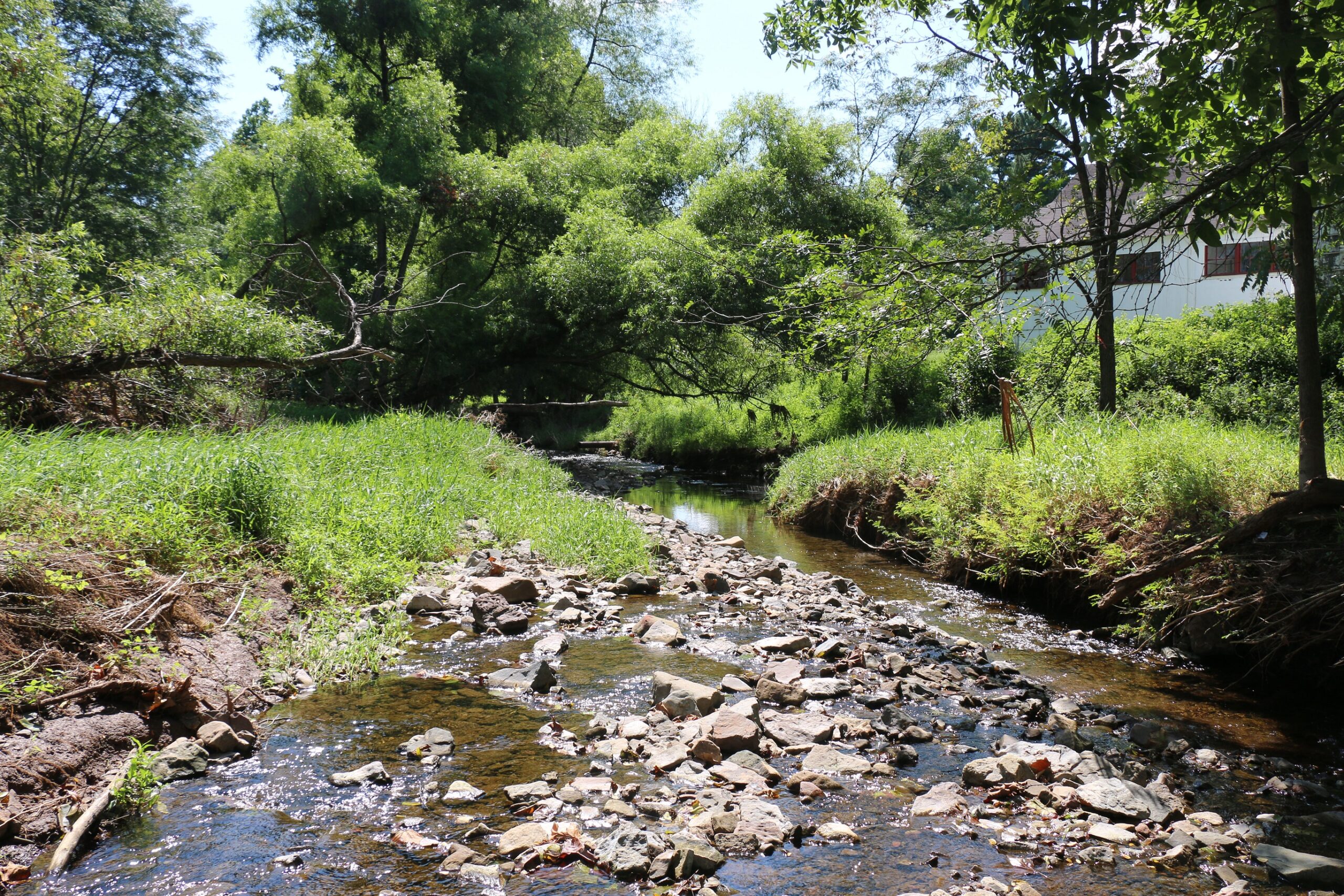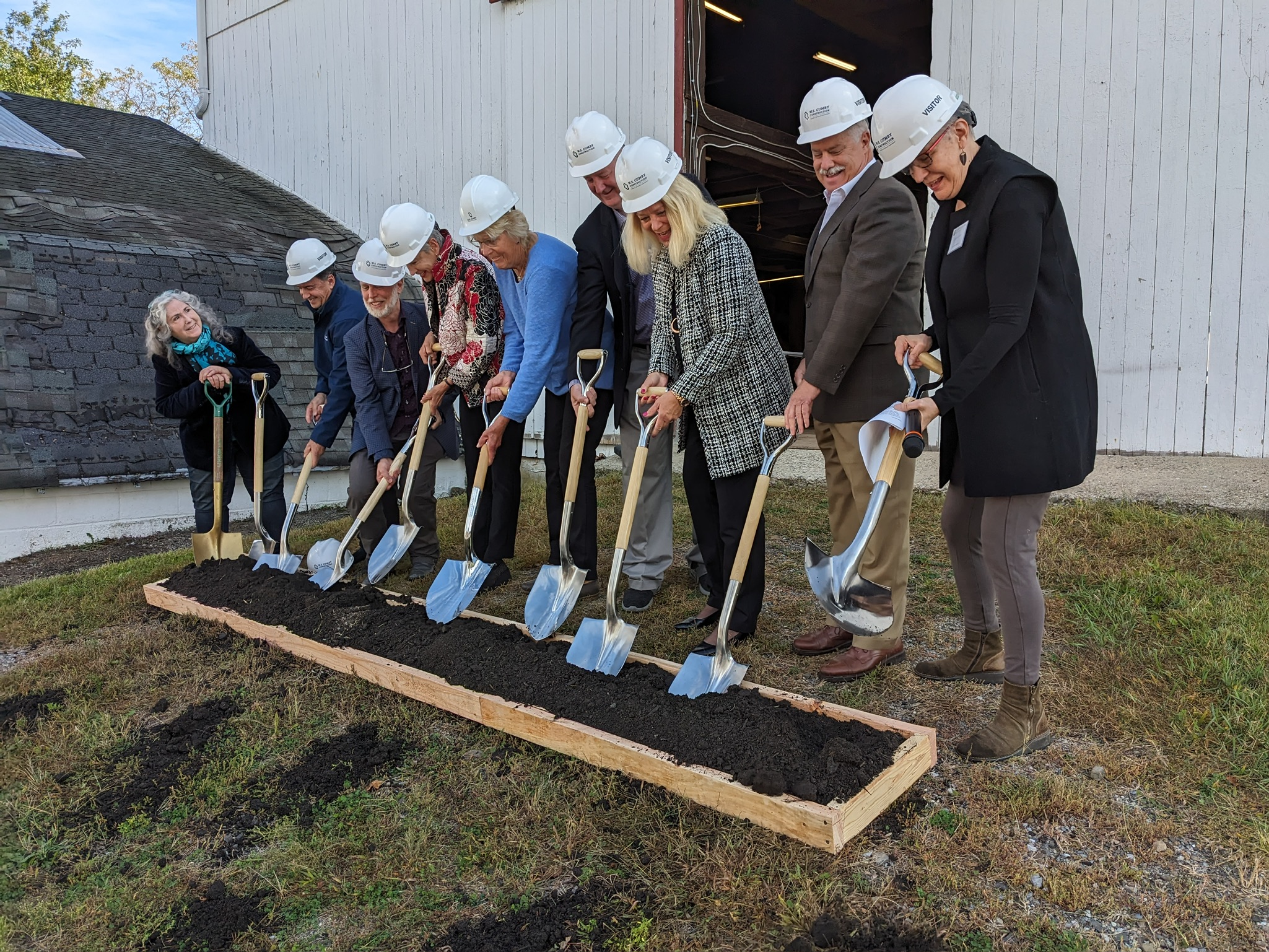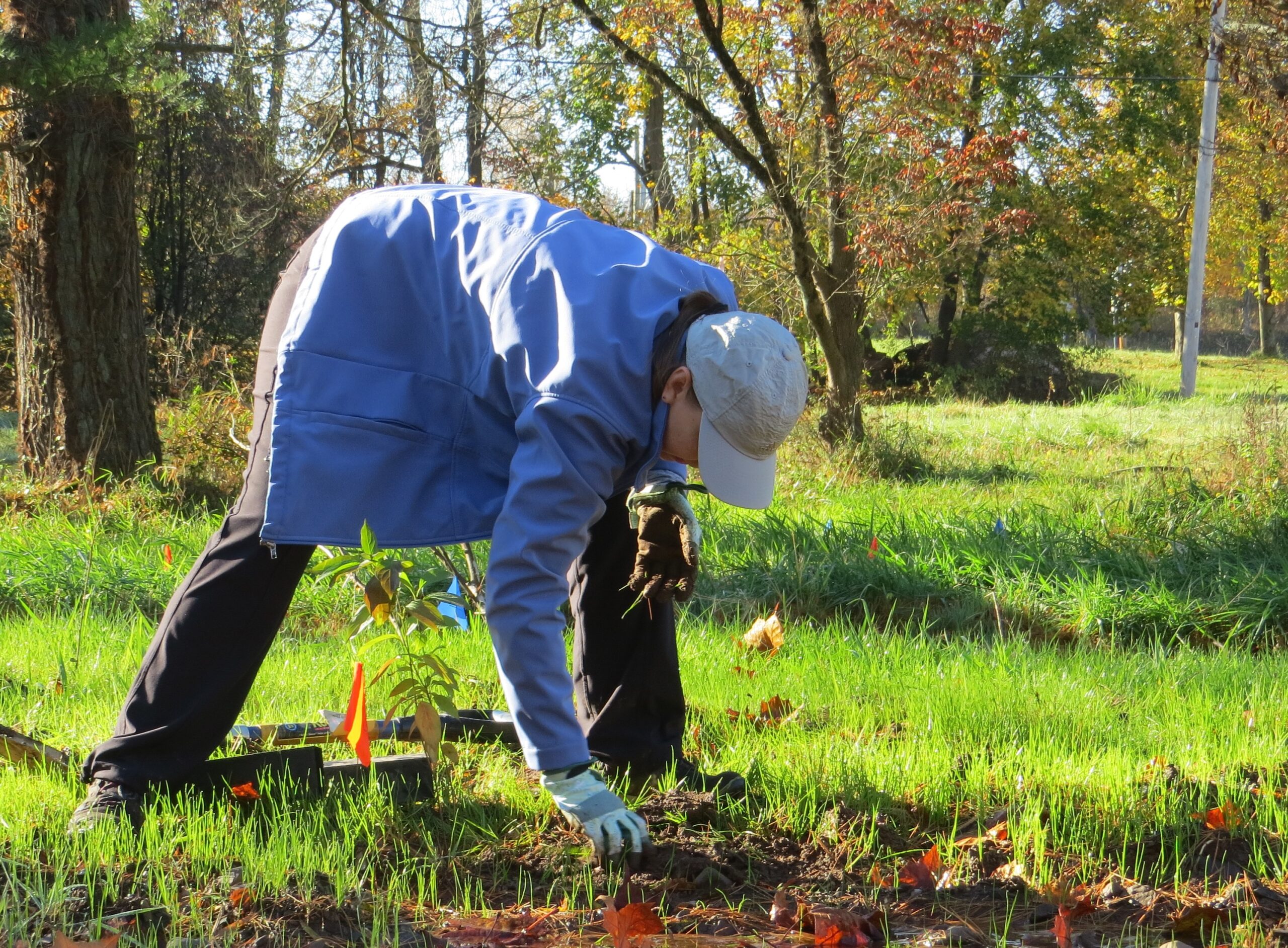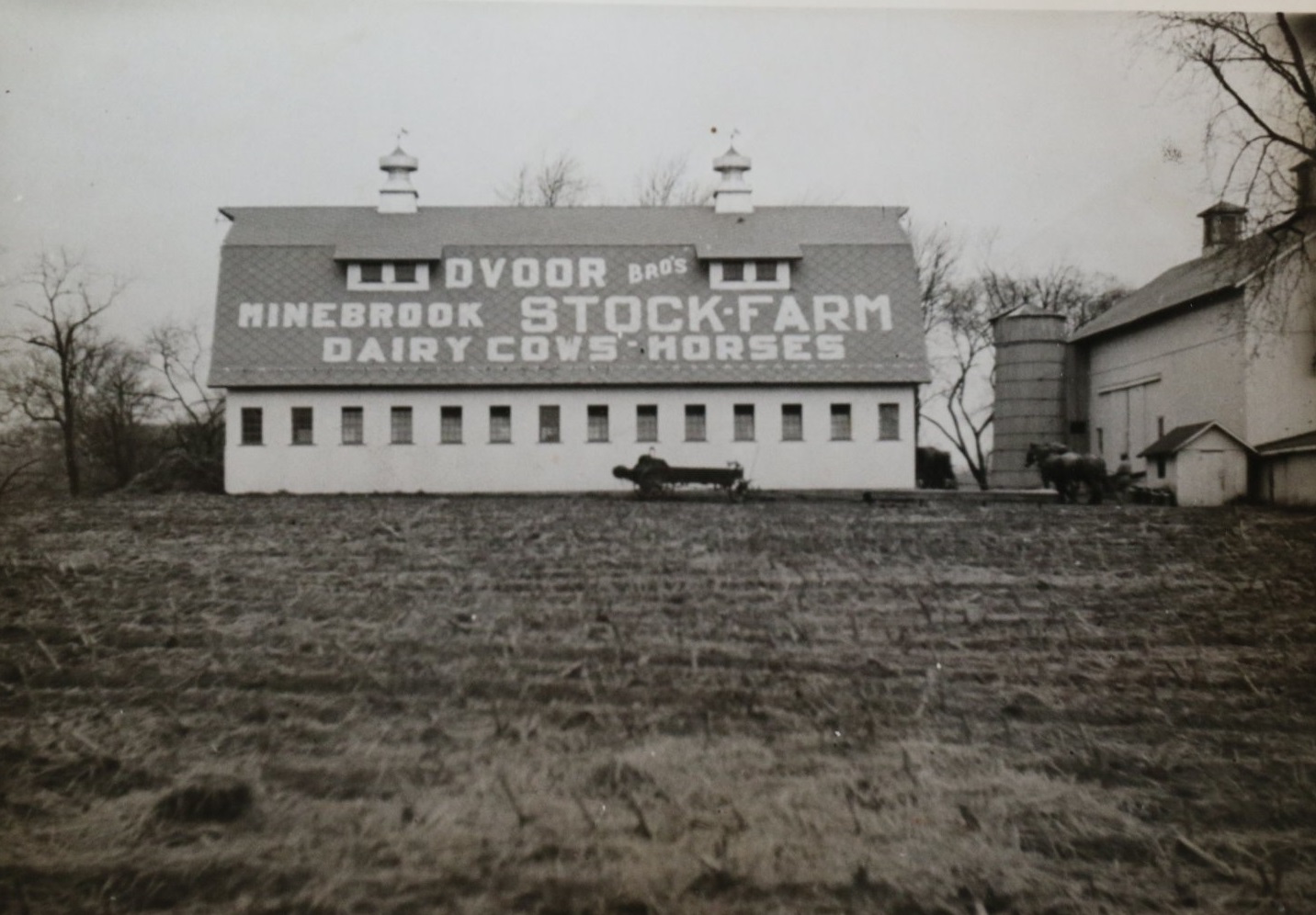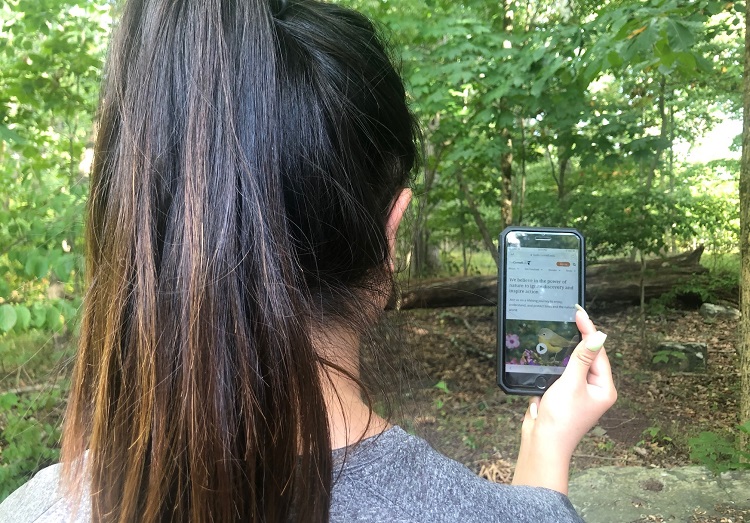Skip to content
Restoration Project Aims to Improve How Brook Handles Rain
On Saturday night, July 17, a brutal rainstorm tore through Hunterdon County, pounding the area with up to 6.11 inches of rain between 6 p.m. and midnight. Roads were flooded, cars were stranded in the high waters, and countless basements needed bailing out.
At the Dvoor Farm, the heavy rain swelled the Mine Brook/Walnut Brook. The water slammed over the concrete bridge that leads from the wagon house to the wetlands. It washed away gravel that smoothed the walk from the bridge to the trail, and tore about two dozen tree cages away. (Thankfully, the trees held fast.) The flood created two giant log jams along the river, and several smaller ones.
“My God, water was everywhere. It was violent and high and it blasted across the wetlands to the hillside below the parking area at the Dvoor Farm,” said HLT Land Steward Kristin Winters. “The water was flashing through there, moving very fast and very powerfully.”
Then Hurricane Ida arrived with its record rainfalls and terrible flooding. At least 27 deaths were reported in New Jersey. In Hunterdon County, the hurricane took a disproportionately cruel toll, in terms of population, with six deaths.
—-
Hunterdon Land Trust’s Stream Restoration Project aims to improve upon flooding problems with the Mine Brook/Walnut Brook by decreasing its energy and swelling during rainstorms, and shifting water onto the floodplain rather than having it rush downstream. About 1,200 feet of the brook’s stream channel and riparian buffer – an area stretching from the shed and wagon house on the farm to the bridge on Mine Street – will be restored. (A riparian buffer is the naturally vegetated area near the stream.)
The project comprises four major components:
-
Stabilizing and protecting the banks from erosion by placing boulders and plantings in key positions. Once stabilized, less soil from surrounding fields will wash into the stream during storms, which will serve the double benefit of reducing soil erosion and improving water quality, not only for the brook, but also downstream where it flows into the First, Second and Third Neshanic rivers.
-
Excavating several shallow vernal pools near the stream channel to manage the flow of water during a storm. The vernal pools will enhance and diversify wildlife habitat and provide a stable area for water to collect during large rain events. This will help reduce runoff by giving stormwater a place to go during storm events, and may improve groundwater recharge as the water has more time to percolate through the soil.
-
Restoring a three-acre area within the riparian buffer by planting 280 bare root native trees and shrubs. This will reduce the number of invasive species by the brook.
-
Using existing debris and brush found around the stream channel to improve the aquatic and terrestrial habitat.
“We’re going to beautify the creek and create a place that will help educate people on how excellent stormwater management works,” Winters said.
This is the second part of the Stream Restoration Project; earlier work was completed upstream on the Dvoor Farm in 2011. Funding for this project is provided by the U.S. Department of Agriculture’s Natural Resources Conservation Services’ EQIP (Environmental Quality Incentives Program) Grant; a North Jersey Resources Conservation Development (RCD) 319 Grant; a Church & Dwight Grant; and the Washington Crossing Audubon Society’s Polly Holden Conservation Endowment Grant. The work will be done by Trout Scapes.
Catherine Suttle, HLT’s director of cultural resources, said RCD managed the first part of this project back in 2011 and spearheaded the effort to get funding for this second and final round of improvements.
“It’s great to see this project coming to fruition,” Suttle said. “We appreciate that RCD kept this project on their radar all these years. And NRCS has been extremely helpful in the design and funding of this project and will be onsite when the work is being done.”
The work on the stream bank was originally expected to begin in September but has been pushed back to December. The planting of native species will likely in the spring of 2022.
Share This Story, Choose Your Platform!

